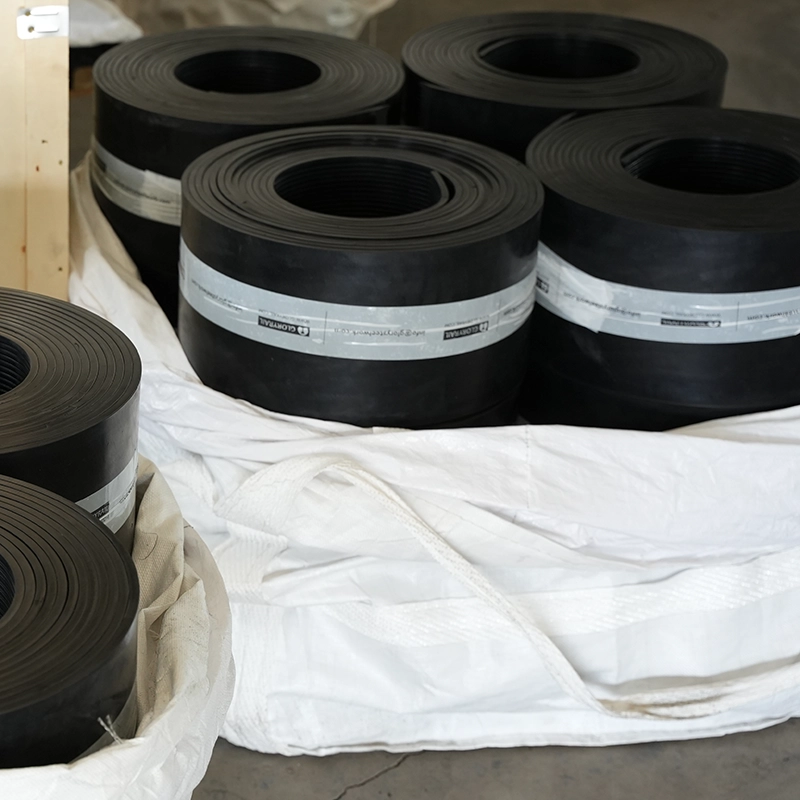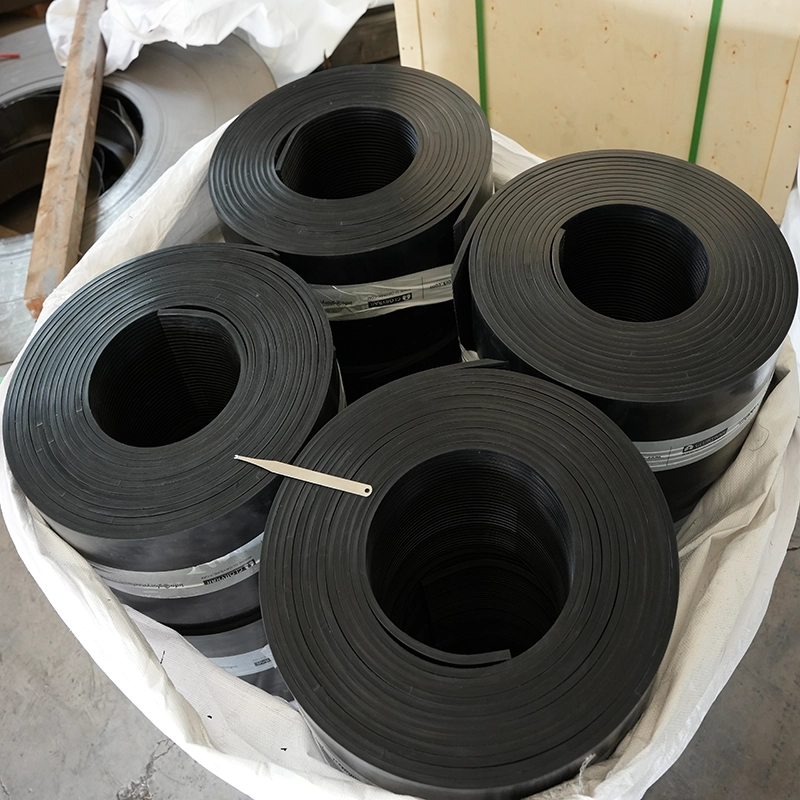Rail Pads
Overview
We offers two types of specialized shock-absorbing rail pads for rail systems, both designed to dampen vibration, reduce noise, distribute wheel loads, and prevent rail displacement—ultimately extending the service life of rails and foundations.
- Continuous Rail Pads: Heavy-duty design tailored for continuous rail support systems, available in two high-durability rubber materials (NBR/SBR) and optimized for heavy-duty industrial scenarios (e.g., ports, steel plants, open-pit mining heavy gantry cranes).
- Individual Rail Pads: “Soft-mount” design for intermittent support structures, offered in three materials (SBR/NBR/EVA) to cover light-to-heavy load requirements and noise reduction needs with greater flexibility, suitable for underground mine workshops or indoor mining material handling cranes.
Continuous Rail Pads
Product Overview
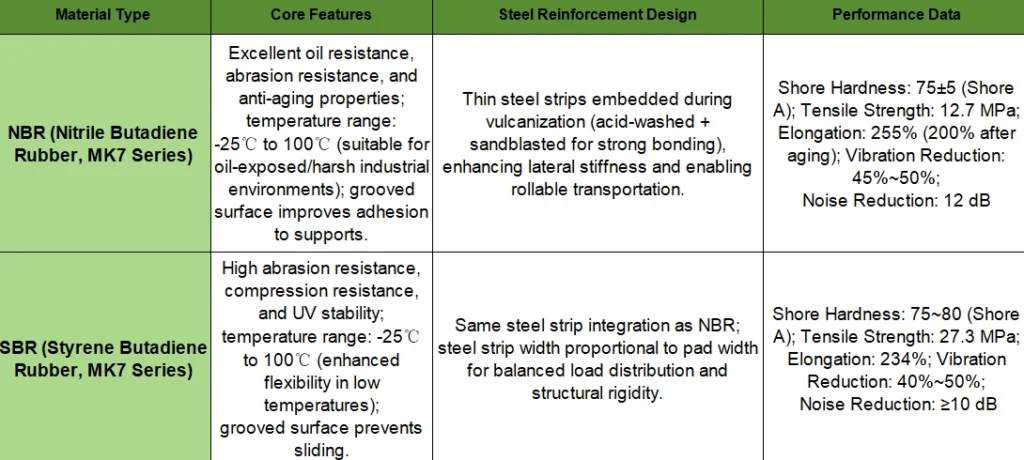
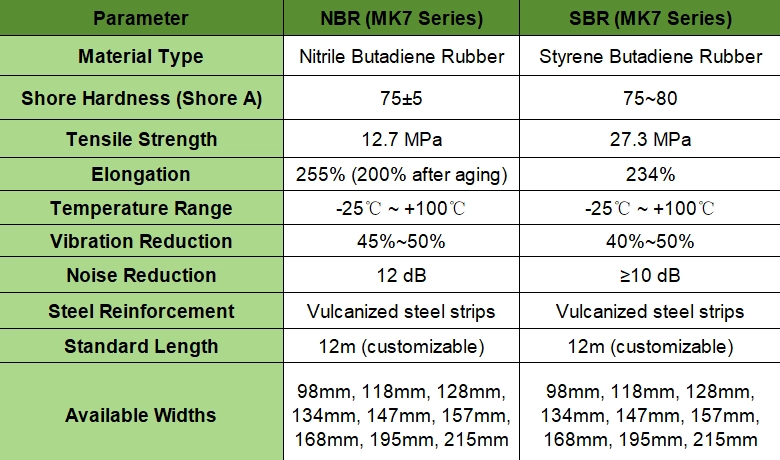
Material Selection Guide
- Oil-exposed environments (e.g., machinery workshops, oily docks, mining crane lubrication zones): Prioritize NBR (superior oil resistance).
- General heavy-duty scenarios (e.g., port container cranes, steel plants, open-pit mining gantry cranes): Choose SBR (balanced abrasion resistance and low-temperature flexibility).
Core Design & Functionality
- Grooved Surface Technology: Deep grooves on the pad surface ensure tight contact with supports, reducing sliding wear and lateral displacement under dynamic loads.
- Steel Strip Reinforcement System: High-strength thin steel strips embedded in rubber:
- Enhance resistance to crushing and expansion.
- Maintain transverse rigidity even in extreme operating conditions.
- Enable rollable transportation to minimize handling damage.
- Load Distribution Optimization: Spreads concentrated wheel loads over a larger area to reduce pressure on concrete foundations; dampens irregular contact between rails and supports, protecting crane mechanisms and extending wheel/axle lifespan.
Applications
- Ports & Wharves: Container cranes, Ship-to-Shore (STS) cranes.
- Heavy Industry: Steel plants, coking plants, cement factories.
- Mining Operations: Open-pit mining heavy gantry cranes, mining material transfer cranes, crane rails in ore storage yards.
- Shipbuilding: Dockside rail systems for heavy lifting.
- Logistics & Warehousing: High-capacity overhead crane installations.
Installation Instructions
- Sizing & Cutting: Pads should be 5mm narrower than the supported rail to avoid interference; standard 12m lengths can be cut with a hacksaw or jigsaw. Minimum installed length must not be less than the spacing between three pairs of rail fixing clips.
- Surface Preparation: Ensure the support area is clean, oil-free, and free of protrusions that could damage the pad; do not paint the steel structure beneath the pad to ensure optimal adhesion.
- Installation Steps: Place the pad with flutes (grooves) facing upward for proper load distribution.
- Welding Protection: Remove the pad under the weld zone or use thermal barriers to prevent heat damage during rail welding.
Individual Rail Pads
Product Overview

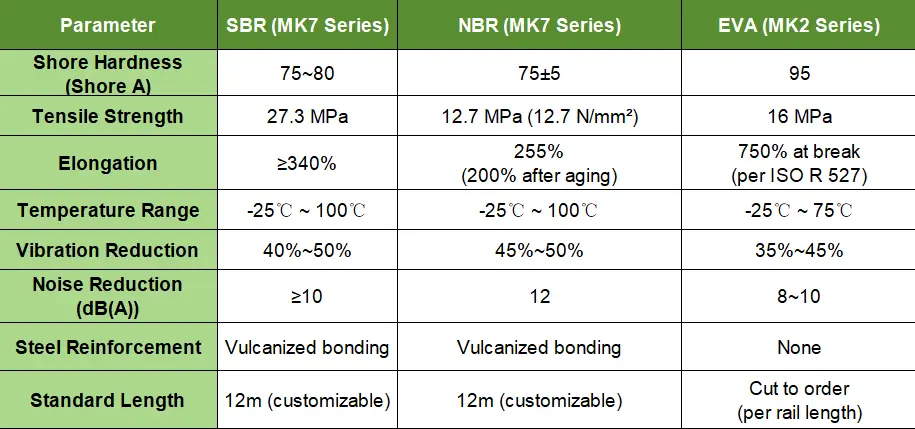
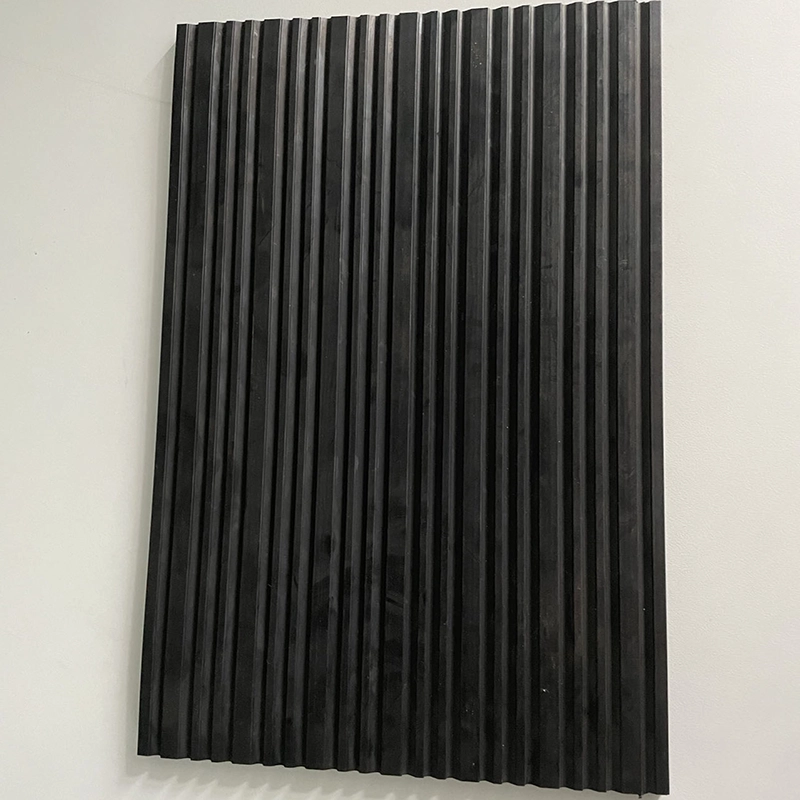
Applications
- Heavy Industry: Port cranes, steel plants, coking plants, logistics hubs.
- Mining Operations: Underground mine workshop cranes, semi-underground mining transfer cranes, light-duty ore sorting cranes.
- Light Industry: Warehouse overhead cranes, workshop hoists, sortation systems.
- Special Environments: Wet docks, oil-exposed workshops, outdoor rail installations (SBR/NBR preferred for weather resistance).
Rail Pads Selection Guide
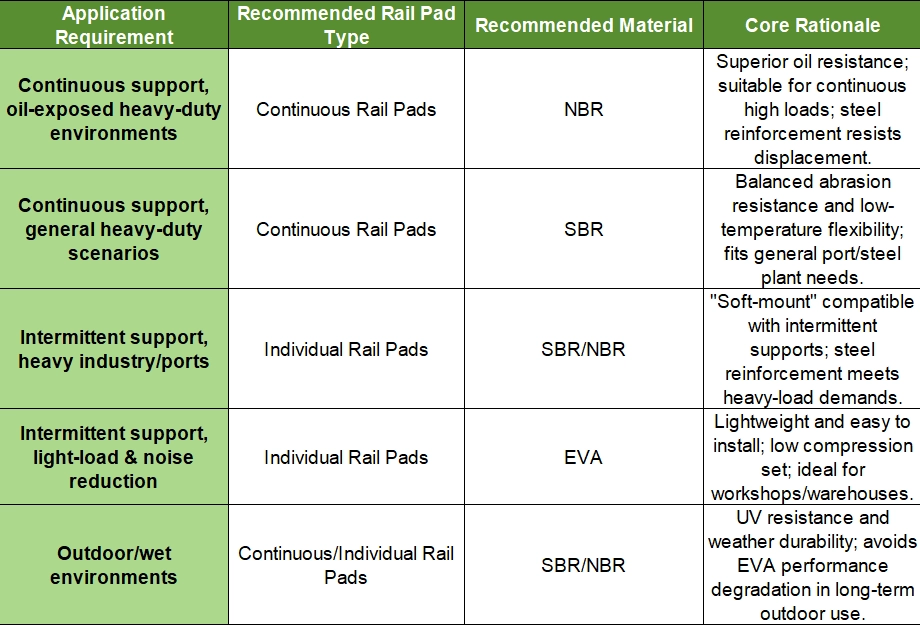
Customization & Ordering
General Customization:
Size Customization: Both pad types support lengths beyond 12m (e.g., pre-cut to rail length); Continuous Rail Pads offer custom widths/thicknesses to match special rail profiles (e.g., wide-gauge rails for mining gantry cranes).
Material Customization: Continuous Rail Pads are available in special formulations (e.g., flame-retardant rubber for underground mining safety requirements, dust-resistant coatings for open-pit mining) for explosive/hazardous environments.
- Sample Policy: Free samples are available upon request for material performance testing and application validation (including mining dust environment compatibility tests).
FAQs
Q: What types of rail pads do you offer?
A: Two types: Continuous Rail Pads (for continuous-support systems, heavy-duty scenarios) and Individual (single-piece) Rail Pads (for intermittent/soft-mount supports).
Q: What materials are available and how do they differ?
A: NBR (Nitrile Butadiene Rubber, MK7) — best for oil-exposed environments; good abrasion and aging resistance.
SBR (Styrene Butadiene Rubber, MK7) — balanced abrasion resistance and low-temperature flexibility; good outdoor/UV performance.
EVA (MK2) — lightweight, no steel reinforcement, easy to cut; suited to light-load and noise-reduction applications (not recommended for oily/outdoor heavy-duty use).
Q:Are steel reinforcements used? Which pads include them?
A: Yes — continuous pads and SBR/NBR individual pads include vulcanized thin steel strips (acid-washed & sandblasted for bonding). EVA pads are steel-free.
